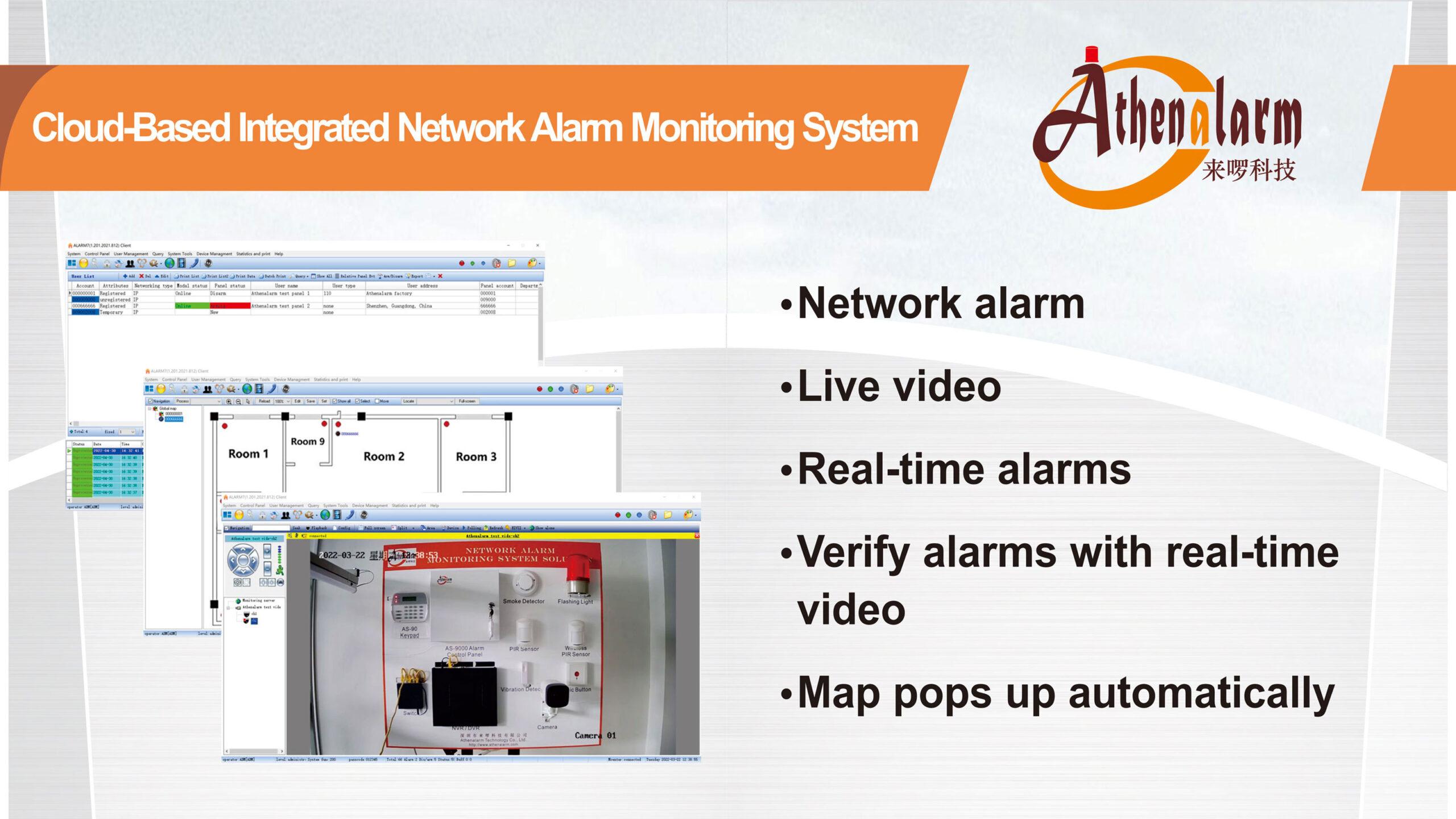



The Working Principle of Alarm Detectors
1 Passive infrared detector (PIR motion sensor)
Any object will emit varying degrees of infrared radiation due to differences in surface heat. The wavelength of infrared radiation varies depending on the object. Infrared detection is mainly used to detect human bodies and other invading moving objects. When the human body enters the detection area, the stable and unchanged thermal radiation is destroyed, generating a changing thermal radiation. After receiving it, the infrared sensor amplifies and processes it, issuing an alarm signal.
There are two key components in passive infrared detectors, one is a Fresnel lens and the other is a pyroelectric sensor. Any object in nature with a temperature higher than absolute (-273 ℃) will produce infrared radiation, and the wavelength of infrared energy released by objects at different temperatures also varies. The human body has a constant body temperature, which differs from the temperature of the surrounding environment. When the human body moves, this differential change is detected by a pyroelectric sensor through a Fresnel lens, thereby outputting an alarm signal.
- Dual infrared detector and quaternary infrared detector: A detector with two detection sources that integrates two pyroelectric sensors with the same performance but opposite polarity is a dual infrared detector. A detector with four detection sources that integrates four pyroelectric sensors with the same performance but opposite polarity is a quaternary infrared detector.
2 Active infrared detector
Composed of an infrared transmitter and an infrared receiver. The infrared transmitter emits one or most modulated infrared rays towards the infrared receiver. When there is no obstruction between the transmitter and receiver, the detector will not sound an alarm. When an object obstructs, the output signal of the receiver changes and the detector alarms.
- Infrared beam detector: A detector that uses beam blocking to block an invisible infrared beam and trigger an alarm when someone crosses the monitoring protection area. It is always used in pairs and is commonly used for outdoor perimeter alarms. The transmitter emits one or more beams of infrared light that cannot be seen by the human eye, forming a warning line. When an object passes through, the light is blocked, and the receiver signal changes. After amplification and processing, an alarm is triggered. The infrared beam detector should choose an appropriate response time: a short time can easily cause unnecessary interference, such as birds flying over or small animals passing through. If the time is too long, there may be missed alarms. The minimum shading time is usually determined at a speed of 10 meters per second. If a person’s width is 20 centimeters, the shortest interruption time is 20 milliseconds. An alarm will sound if it is greater than 20 milliseconds, and no alarm will sound if it is less than 20 milliseconds.
3 Vibration detector
Vibration detectors use the vibration signals generated by intruders during various destructive activities as an alarm basis. For example, when intruders engage in destructive activities such as chiseling walls, drilling holes, damaging ATMs, and prying into safes, they can cause vibrations from these objects. The detector that triggers an alarm with these vibration signals is called a vibration detector.
4 Door contact
It is a widely used, low-cost, easy to install detector that does not require adjustment or maintenance. The door contact is divided into movable components and output components. Install movable components on movable doors and windows. The output components are installed on the corresponding doors and windows, and the installation distance between the two does not exceed 10 millimeters. There are two wires on the output component, and the normal state is normally closed. When the door and window are opened more than 10 millimeters, the output is converted to normally open.
The principle is to use magnets to control the opening and closing of the magnetron. When the two are close together, the magnetron is in a closed state. At this time, separating the two will disconnect the magnetron, and the disconnection signal will trigger to send an alarm signal to the alarm control panel.
5 Smoke detector
There are two types: photoelectric and ionic.
The photoelectric smoke detector uses smoke to block the light path and emit an alarm, while the ionic smoke detector uses its own sensors to sense the ion concentration in the air. Different sensors sense different gases (such as coal gas), and commonly used are smoke detectors designed to detect carbon ion concentration for fire prevention.
The principle of ion smoke detector is that when there are smoke particles between the electrodes, the voltage between the electrodes will change.
6 Glass detector
It uses a piezoelectric microphone installed in the position facing the glass, and effectively detects high-frequency glass breaking sounds, so it will not be affected by the vibration of the glass itself and cause a reaction.
7 Gas detector
Its working principle is that when the sensor at the front end detects gas, the temperature will change. The process of this change is transformed into a control signal through the processing circuit, triggering an alarm signal.
8 Microwave detector
The principle of Doppler effect is applied. In the microwave section, when sent at a certain frequency, when the emitted microwave encounters a fixed object, the frequency of the reflected microwave remains unchanged, that is, when f sent = f received, and the detector will not emit an alarm signal. When the emitted microwave encounters a moving object, the frequency of the reflected microwave will change, that is, if f sent ≠ f received, and the detector will emit an alarm signal.
- Microwave object movement detector: using the Doppler frequency of high-frequency radio waves as a detection method, suitable for open spaces or squares. Microwave is a type of radio wave with a very high frequency and a short wavelength, which is easily reflected by objects. Based on the frequency drift of the incident and reflected waves, intrusion objects can be detected.
9 Ultrasonic object movement detector
The ultrasonic object movement sensor requires a transducer that can send ultrasonic waves and another transducer responsible for receiving them. There are also receiving and transmitting transducers that coexist on the same body. The transducer used for normal transmission sends out a fixed frequency of ultrasonic waves, which are scattered in the detected space. If an object reflects back ultrasonic waves, their frequency will shift to detect whether there is movement of the object. This detector is susceptible to vibration and airflow.
10 Dual detector
In order to overcome the shortcomings of a single technology detector, two detectors with different technical principles are usually integrated together. The detector that only alarms when the sensors of both detection technologies detect human movement is called a dual detector. The common dual detector on the market is microwave + passive infrared.
- Infrared microwave detector: Its working principle combines infrared and microwave. When both infrared and microwave detectors have alarm signals, the detector will only have an alarm output, reducing the possibility of false alarms. There are various models of infrared microwave detectors, corresponding to different detection distances. Some detect a fan-shaped area, some detect a narrow and long area (such as a corridor), and some detect 360 degrees. It is necessary to choose the appropriate model according to specific needs in order to achieve the desired effect. The sensitivity of detectors is generally adjustable.
11 Triple detector
The triple detector is just a gimmick promoted by some manufacturers and sellers, using microprocessor technology as a detection method. Actually, this can only be considered as three types of technology detectors. A true triple detector must have three detection methods, such as passive infrared + microwave + ultrasonic detector.
